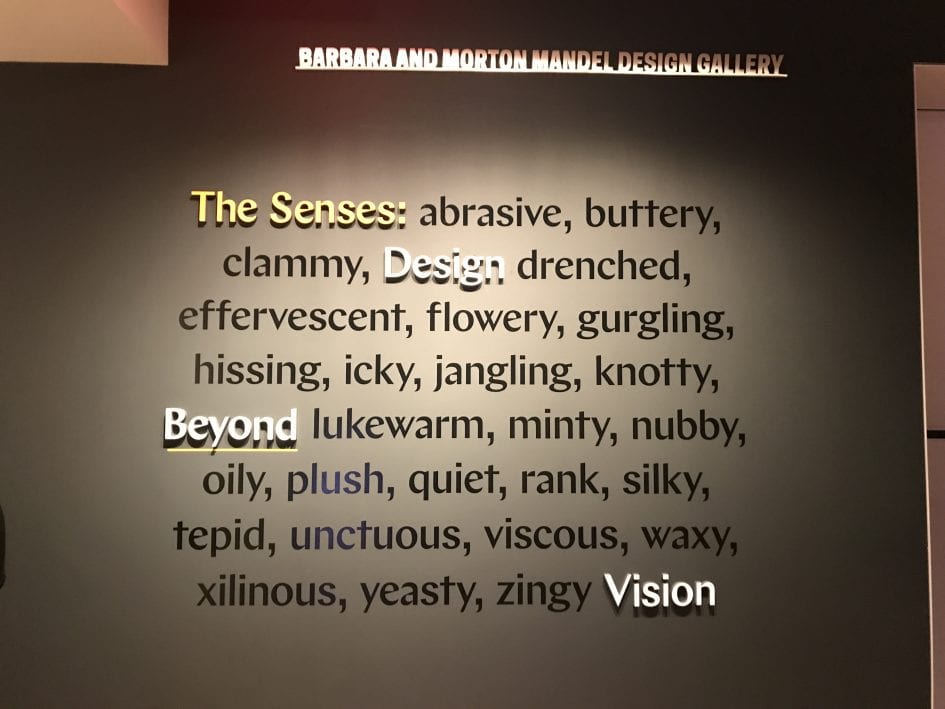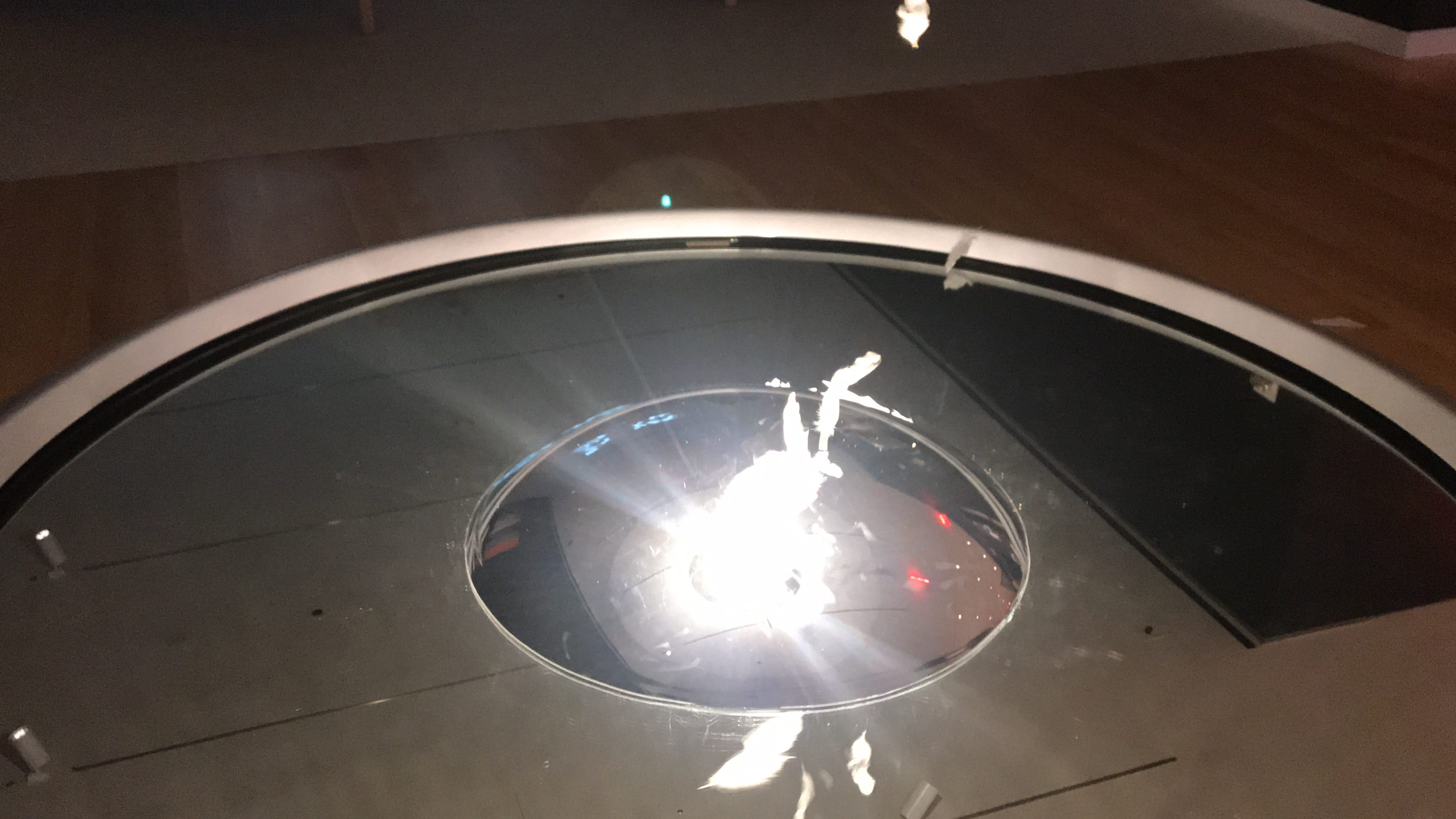The Senses exhibition at Cooper Hewitt blew my mind when the first time I visited. I had never been to an exhibition like this before that invites visitors to touch , to play with, to feel with our different senses. In world of art and design, visual arts is often the priority, often plays the most important role. The mainstream takes vision for granted, but designing for accessibility and inclusive should be really taken into account, and the Senses exhibition excellently illustrate this aspect, even if it’s so hard to cater to all kinds of different audiences. But it feels so good that as visitors we can interact with almost every piece in the exhibition, and even a person on a wheelchair or a person who is visually impaired don’t have to worry they won’t get something out of the exhibition, at the end of the day people took fun experience and some sort of reflection on it with them. The space are divided elegantly by zigzagging screen with threads which would not block the vision because as the lady who guided us said “it’s because all senses are connected together”. It’s just pleasant to walk through the space exploring all kinds of items. This exhibition really explore our relationship with objects, and how experiencing designed objects can bring changes to daily life. As designer we have to be aware that how design should be inclusive and how design shape relationship of space, object, and our life. Just like Alice Sheppard said in the lecture: “Never argue for inclusion.”, the exhibition takes into account every details about accessibility, which is welcoming for the disabled. They have descriptive audio tour for visually-impaired people, and they also place all information and instruction of the exhibited objects at the same level with braille so that someone on the wheelchair can easily read or touch. For example, The Seated Catalogue of Feelings by Sosolimited is an really interesting piece that has some vibration through the chair and the audio and the visual trying to express feelings of bizarre and funny experiences. If visitors can’t sit they can hold a pillow to have similar experience, if visitors are deaf they can feel it through the motion graphic,If visitors can’t sit they can hold a pillow to have similar experience, if visitors are deaf they can feel it through the motion graphic. But I think they can improve a bit because visitors cannot see the graphic of they sit on the chair and if visitors are standing they can only see the graphic and the words projected on the ground are facing them upside down, which is really awkward for me.
Some pieces in the exhibition focus more on experiences, some focus more on technology, more importantly there are many pieces focusing on designing for the disable, designed for strategies and systems for more accessibility. For example, Smithsonian Institution audio-tactile Map designed by Steven Landau in Tactile Library section makes the buildings on the street 3D, and by touch each building and other areas the audio will give description. And I’m also impressed by Dot Watch by couldandco, the watch can display time and text messages from smartphone in Braille. These designers are expanding and reframing disability design in different fields and exploring more possibilities of communicating through touch.
The one that surprised me is the Feather Fountain by Daniel Wutzel. It doesn’t necessarily communicate a deep meaning but it’s artistic and feels poetic. It’s also an interactive kinetic sculpture that gave the audience novel experiences.
The exhibition also reminds me of an exhibition at Museum of Natural History called Our Senses which is also an impressive exhibition and immersive experiences. But this one focuses more on engaging our senses not how we communicate and feel using our senses beyond vision and the audience are generally kids and family, and nothing about disability. The Cooper Hewitt one focus on design and accessibility also experiences. I’m not comparing these two to say which one is better, it’s just make me feel the power of design and how we can explore senses, and communicate in different ways.




Leave a Reply